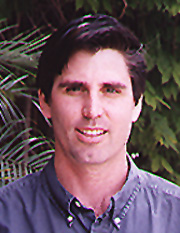 Stewart Brand of Whole Earth Catalog fame is a long-time environmentalist
who in recent years decided nuclear was necessary.
(He also decided
no-till was necessary, which was enough
to convince me he’s gone barmy.)
Here
at TED
he debates Mark Z. Jacobson,
whose new study says we can
power the world with wind, water, and sun.
I think Jacobson should reconsider including building more hydroelectric dams,
but his study does demonstrate that we don’t need nuclear or biomass.
But watch it and see what you think:
Stewart Brand of Whole Earth Catalog fame is a long-time environmentalist
who in recent years decided nuclear was necessary.
(He also decided
no-till was necessary, which was enough
to convince me he’s gone barmy.)
Here
at TED
he debates Mark Z. Jacobson,
whose new study says we can
power the world with wind, water, and sun.
I think Jacobson should reconsider including building more hydroelectric dams,
but his study does demonstrate that we don’t need nuclear or biomass.
But watch it and see what you think:
Here is my critique of Brand’s arguments:

- Need for constant baseload means need to develop storage, which includes batteries, but also pumping water uphill, compressing air, heating salt, and flywheels, none of which are, you should pardon the expression, nuclear science.
- Wind is a dilute source of power means it’s a distributed source of power and thus hard to all fail all at once, especially when combined with other sources.
- “On rooftops is OK”: exactly! Put it on housetops and business roofs and parking lot covers and in rock deserts where there’s no life to bulldoze. Or on places like part of the land for the Mud Creek Wastewater Plant, which is where the Wiregrass Solar plant is in Valdosta.
- “Renewistan”: oh, come on! Put it on rooftops!
- He didn’t even mention wave and tide, which are quite reliable.
- He actually addresses biofuels (and destroys them).
- Footprint is not spacing: wind actually requires the smallest footprint (base of pole) of any power source, and the land between the widely spaced poles can be used for all sorts of other points.
- Timelag to get nuclear deployed would let ice caps melt.
- “Baseload is irrelevant.” We need to match actual need for power, which is higher during the day, and so is sunlight.
- One of the audience members brought up Ray Kurzweil’s point about Moore’s Law for solar meaning that you can’t judge solar by just its current capabilities because it’s getting better rapidly and will continue to do so.
“We don’t need nuclear energy. There’s plenty of solar and wind. We can make it reliable. That’s real data. This is ongoing research. This is not rocket science.Solving the world’s can be done if you really put your mind to it and use clean renewable energy. There’s absolutely no need for nuclear power.”
-jsq
Short Link:
